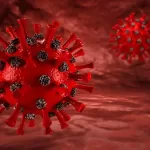
The Protein’s Mark of Death: Decoding the Ubiquitin Code’s Hidden Message
February 8, 2024In a groundbreaking study published in Nature Structural & Molecular Biology, researchers led by Brenda Schulman at the Max Planck Institute and Gary Kleiger at the University of Las Vegas Nevada have unveiled the intricate mechanism behind protein labeling with ubiquitin—a fundamental process crucial for cellular function and disease.
Ubiquitin, a small yet ubiquitous protein, orchestrates a sophisticated system of molecular machines called E3 ligases, dictating the fate of cellular proteins by marking them for degradation or modification. Despite decades of research, the rapid and precise process of poly-ubiquitin labeling has remained elusive, until now.
Through the innovative application of cryo-Electron Microscopy (cryo-EM), Schulman, Kleiger, and their teams captured unprecedented snapshots of the Cullin-RING Ligase (CRL) E3 complex in action, shedding light on its remarkable efficiency and specificity in catalyzing poly-ubiquitin chains.
In an exclusive interview, Brenda Schulman shares insights into the journey that led to this groundbreaking discovery and the potential implications for future therapies.
Unveiling Nature’s Intricacies: The Quest for Understanding
The fascination with ubiquitin lies in its pervasive presence across diverse life forms, orchestrating essential cellular processes with remarkable precision. Schulman, who has dedicated over 25 years to unraveling ubiquitin’s mysteries, likens the journey to being a master detective in an ongoing mystery series, where each revelation leads to new, intriguing questions.
The recent breakthrough stemmed from a collaborative effort between Schulman’s team and Gary Kleiger’s group, aiming to decipher the elusive mechanism of poly-ubiquitin labeling—a puzzle that has intrigued researchers for decades.
The Discovery: Illuminating the Molecular Dance of Ubiquitin
Using a novel chemical trapping method coupled with cryo-EM, the researchers captured fleeting snapshots of the CRL E3 complex in action, revealing the intricate choreography of molecular components during poly-ubiquitin labeling. This unprecedented visualization provided crucial insights into the ultra-rapid and specific catalysis underlying the process—a feat that had eluded scientists for over 30 years.
The study not only elucidated the molecular mechanism of poly-ubiquitin labeling but also uncovered key insights into the geometric and molecular constraints governing the process. Remarkably, these findings were consistent across diverse CRLs, suggesting a universal mechanism at play.
Implications for Disease Therapy: Paving the Way for Targeted Protein Degradation
Beyond fundamental insights, Schulman highlights the potential translational impact of their findings in the field of targeted protein degradation (TPD)—an emerging strategy for treating diseases. By understanding the molecular intricacies of CRL-mediated poly-ubiquitin labeling, researchers can design more effective TPD drugs that harness the cell’s natural machinery to eliminate disease-causing proteins.
The study’s findings offer valuable guidance for developing next-generation TPD therapies and deciphering their mechanisms of action in diseased cells—an exciting frontier with far-reaching implications for future drug development and precision medicine.
As researchers continue to unravel the mysteries of ubiquitin and its role in cellular regulation, Schulman remains steadfast in her quest for understanding, driven by the thrill of discovery and the promise of advancing human health through scientific innovation.
More information: Joanna Liwocha et al, Mechanism of millisecond Lys48-linked poly-ubiquitin chain formation by cullin-RING ligases, Nature Structural & Molecular Biology (2024). DOI: 10.1038/s41594-023-01206-1
Charlotte Crowe et al, Mechanism of degrader-targeted protein ubiquitinability, bioRxiv (2024). DOI: 10.1101/2024.02.05.578957


















